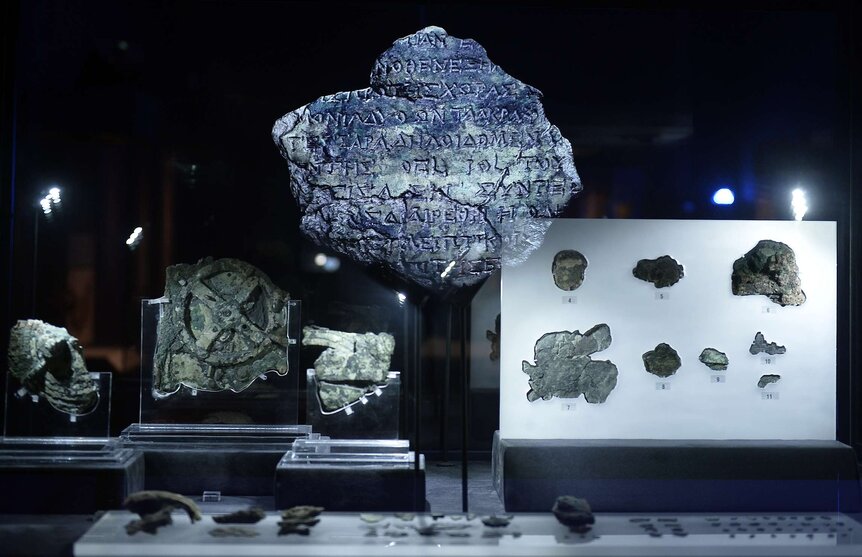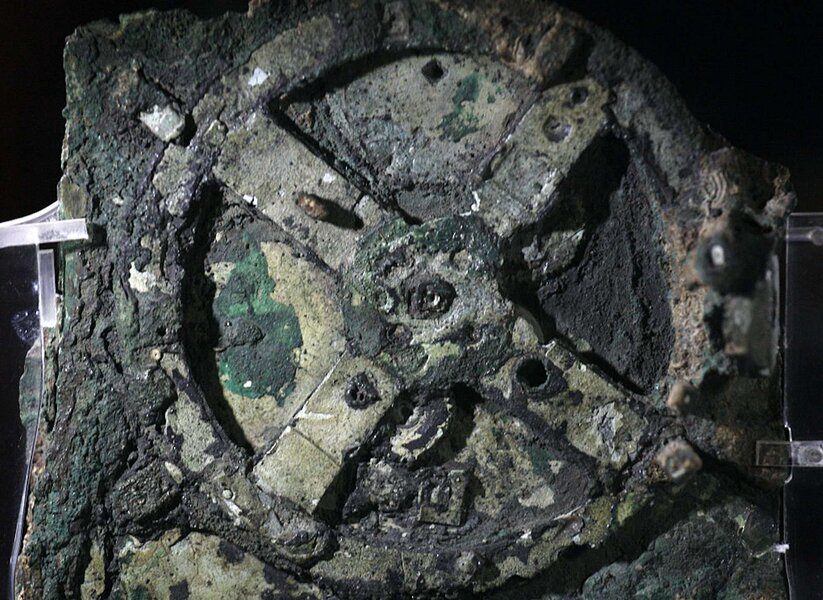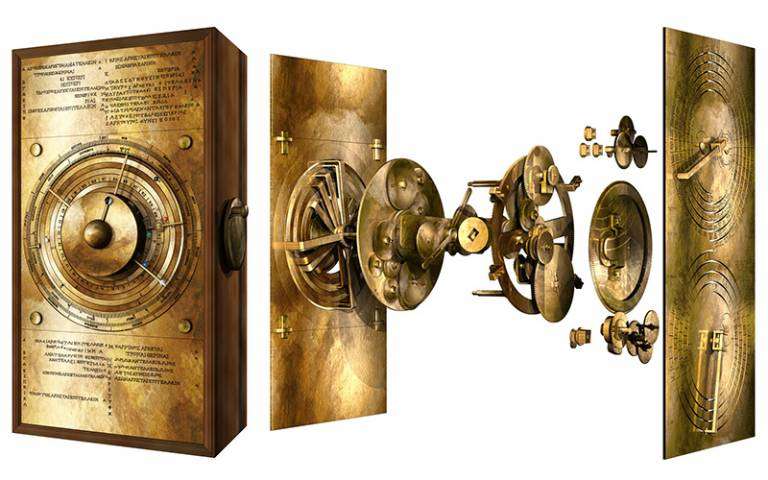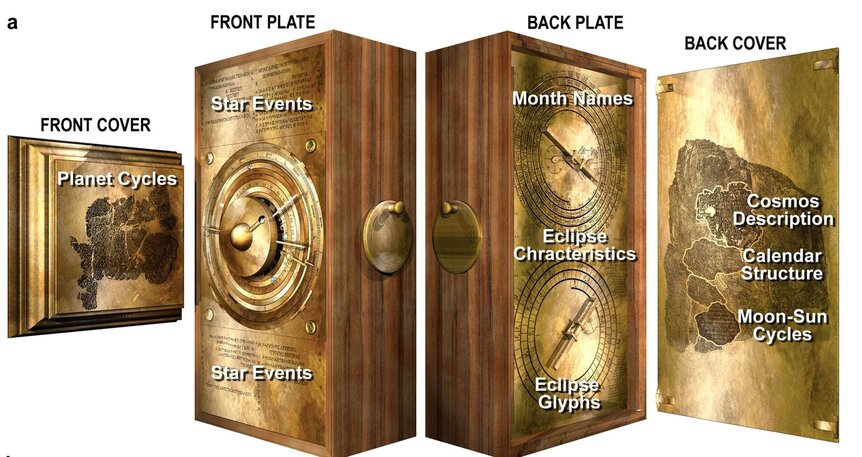Create a free profile to get unlimited access to exclusive videos, sweepstakes, and more!
Scientists create new digital model for 2,000-year-old Antikythera Mechanism
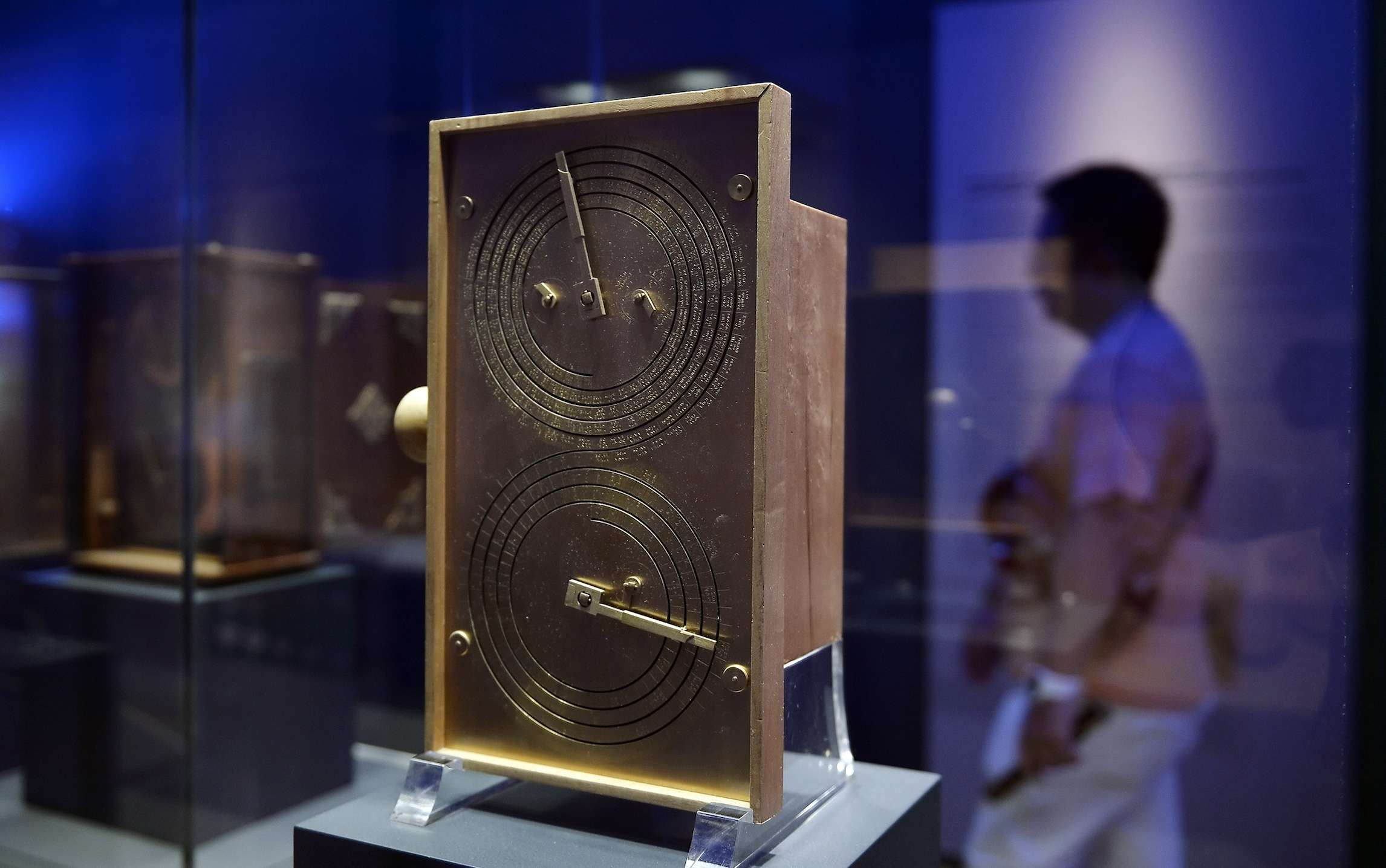
Great mysteries are meant to be penetrated and one of the most fascinating is the 2,000-year-old computing machine known as the ancient Greek Antikythera Mechanism.
This intricate, bronze clockwork device was first discovered by Greek sponge divers inspecting a Roman-era shipwreck back in 1900 near the island of Antikythera in the Mediterranean Sea. Since then, scholars and historians have speculated as to the exact nature of its precision Steampunk-like workings.
Now a team of scientists and researchers at University College London (UCL) has uncovered a significant piece of the puzzle that comprises this fascinating astronomical calculator, which is thought to be a hand-cranked mechanical contraption used to predict astronomical events and heavenly logistics.
The Antikythera Mechanism is considered to be the world's first analog computer and perhaps the finest feat of engineering ever to emerge from that era of antiquity. No equivalent machine was created until at least a thousand years later when craftsmen built medieval cathedral clocks.
This 2,000-year-old device was fabricated using a complex intermeshing of 30 surviving gears and was harnessed to not only predict the positions of the Sun, Moon and the planets, lunar and solar eclipses, and astronomical phenomena, but also dates for the ancient Olympics.
In a new research paper published in Scientific Reports, a multidisciplinary UCL Antikythera Research Team reveals a new digital model of the shoebox-sized device replicating the Greek order of the cosmos by dissecting its strange toothed sychronicities.
“Ours is the first model that conforms to all the physical evidence and matches the descriptions in the scientific inscriptions engraved on the Mechanism itself," explains lead author Professor Tony Freeth with UCL Mechanical Engineering. “The Sun, Moon and planets are displayed in an impressive tour de force of ancient Greek brilliance.”
UCL's research team is overseen by Dr. Adam Wojcik and includes Professor Tony Freeth, Professor Lindsay MacDonald (UCL CEGE), Dr Myrto Georgakopoulou (UCL Qatar) and UCL Mechanical Engineering PhD candidates David Higgon and Aris Dacanalis.
In the past hundred years, scientists have slowly revealed some of its workings, especially studies made in 2005 using 3D X-rays and surface imaging that allowed researchers to learn how the machine foretold eclipses and calculated motions of the Moon.
But until now, a complete comprehension of the Antikythera Mechanism has eluded the best minds on the planet, partially because only one third of the device was retrieved and even those fragments were broken into 82 pieces.
Fragment A is the largest of these disparate chunks and indicates features of bearings, pillars, and a block. Another significant fragment called Fragment D showcases an unusual disk and a 63-tooth gear and plate.
Earlier X-ray research revealed thousands of inexplicable text characters hidden inside the fragments that remained unread for almost two millennia. Engravings on the rear cover include a description of the cosmos display, with the planets moving on concentric rings and defined by colored marker beads.
A pair of specific numbers discovered in the front cover were 462 years and 442 years, which accurately denote the back-and-forth cycles of Venus and Saturn as seen from Earth.
“The classic astronomy of the first millennium BC originated in Babylon, but nothing in this astronomy suggested how the ancient Greeks found the highly accurate 462-year cycle for Venus and 442-year cycle for Saturn,” explained PhD candidate and UCL Antikythera Research Team member Aris Dacanalis.
By latching onto an ancient mathematical method once presented by the Greek philosopher Parmenides, Professor Freeth and his UCL crew were able to explain how cycles for Venus and Saturn were accomplished by just turning the handle and also recovered the cycles of the remaining known planets.
“After considerable struggle, we managed to match the evidence in Fragments A and D to a mechanism for Venus, which exactly models its 462-year planetary period relation, with the 63-tooth gear playing a crucial role,” notes PhD candidate and team member David Higgon.
According to Professor Freeth, the team then constructed innovative mechanisms for the planets that would calculate the new advanced astronomical cycles and minimize the system's number of gears, so that they would squeeze into the narrow spaces available.
“This is a key theoretical advance on how the Cosmos was constructed in the Mechanism,” added co-author, Dr. Adam Wojcik. “Now we must prove its feasibility by making it with ancient techniques. A particular challenge will be the system of nested tubes that carried the astronomical outputs.”
All this has opened a multitude of windows for the researchers into the puzzlements of the Antikythera Mechanism and just how accurately it predicted astronomical events. Their next step will be to recreate an actual physical model using the same 2,000-year-old techniques.
The recovered Greek Antikythera Mechanism is currently on display at the National Archaeological Museum in Athens.
